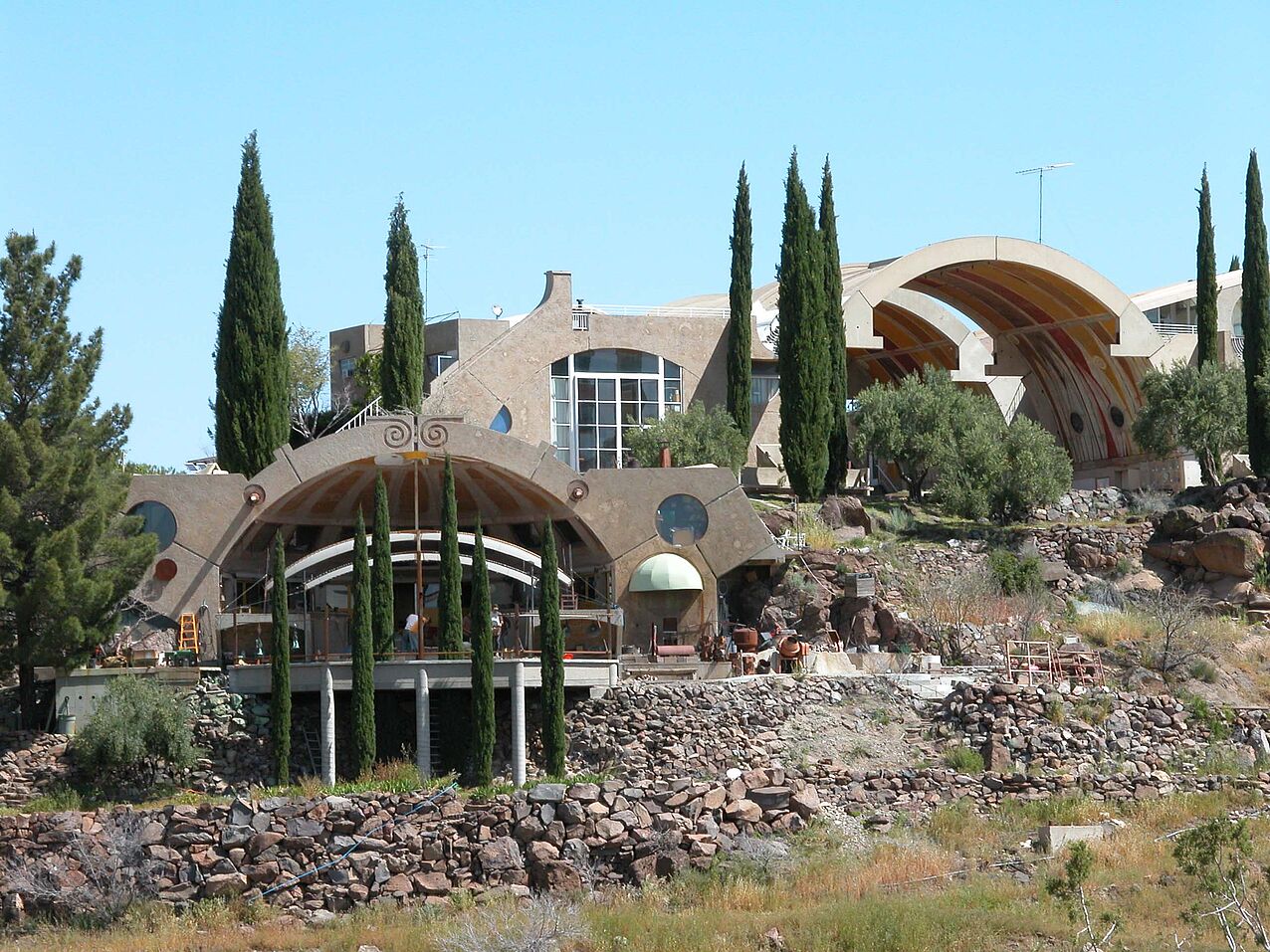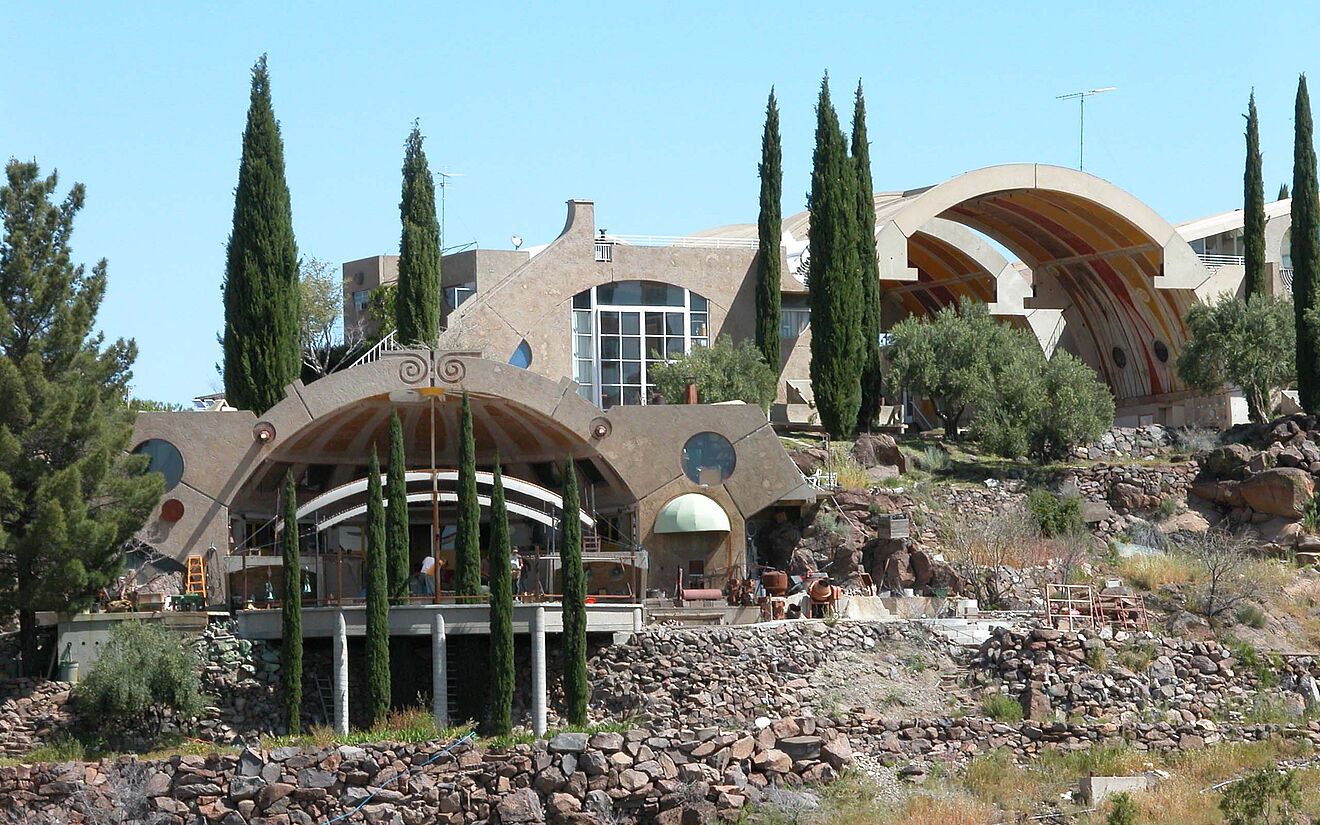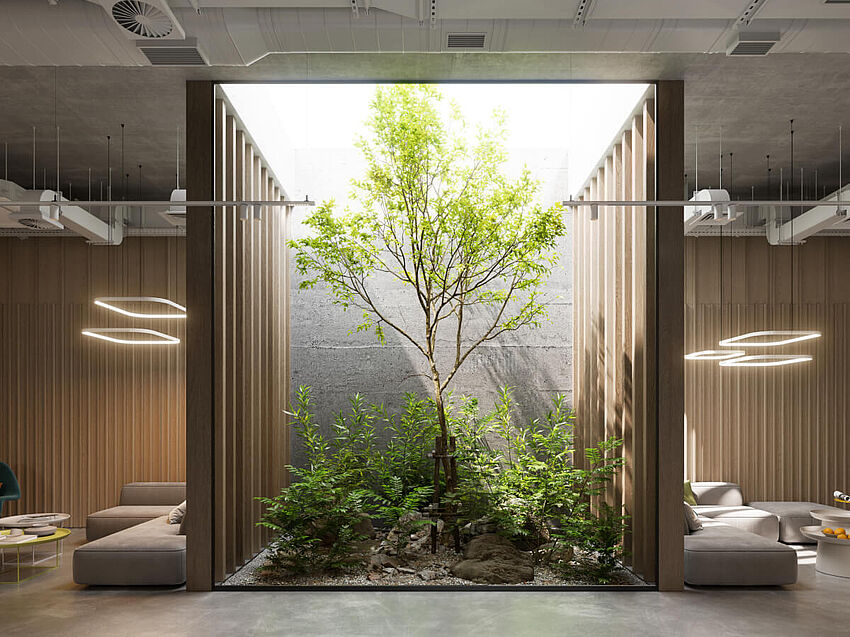In the second part of our series “The city of the future” we introduce you to the urban vision of Italian architect Paolo Soleri: Arcosanti, the ruins of a better world.

Arcology: architecture and ecology combined
In the inhospitable Sonora desert of Arizona lie the concrete and glass beginnings of the urban ideal as showcased by Paolo Soleri. Arcosanti is the utopia of a sustainable town of the past.
In 1970, the visionary started realizing his architectural dream in a site close to Cordes Junction, 100 kilometres north of Phoenix. Soleri calls the fundamental principle of his philosophy “Arcology”, a term he coined out of the words architecture and ecology. The construction rebel who died in 2013 took his inspiration from ecology, the relationships between living organisms and their environment. In the urban sprawl found in major cities with their mushrooming metropolitan regions Soleri recognized a threat to culture and the environment.
Towering cities
In such modern cities with their commercial districts in city centres and their large-scale urban sprawl, it is the interpersonal or human aspect that suffers - the communication between residents languishes, according to Soleri. Only in a city in which intensive interactions take place between the people is it possible to uphold the culture or let it grow. He consequently pursued an approach of considerate architecture, which was to develop upwards like a tower instead of outwards. In his plans mega cities spiral upwards on supporting columns. Honeycomb-like buildings are home to apartments and green spaces, businesses and marketplaces. This was how Arcosanti was supposed to look too. To date a mere 1 percent of the planned city has been completed as Soleri was unable to secure investors who shared his philosophy.
Sustainable urban development in the desert
There are no vehicles in Arcosanti since in Soleri's designs the upward city should be interwoven to form an organic whole complex, making it possible to reach every area on foot. Ironically, today it is not the height of the buildings being the reason for a car-free Arcosanti but the size of the city. On the site there are only around ten buildings, including a café and an amphitheatre, which host regular architecture workshops, exhibitions or performances. In the first 40 years more than 7,000 enthusiasts of arcology built and also lived in the desert town.
Today sustainable urban development is a key theme, as demonstrated by the example in Malmö in Sweden. Soleri recognized it back then and was away ahead of his time. Arcosanti was to evolve into a purely ecological city producing its own food and energy. And this has been achieved in part: buildings made of concrete absorb heat during the day and release it again at night, and electricity is generated from wind and solar power. A row of greenhouses is used for food production and also as heating system. The warm air from the caldaria is fed into the living spaces via a tunnel system.
Inspirational Arcosanti
Even if Paolo Soleri’s architectural dream is still a building site today, his theories and work on sustainable architecture are as contemporary as ever. They have been showcased across the globe and serve as a source of inspiration to architects for sustainable urban planning.




